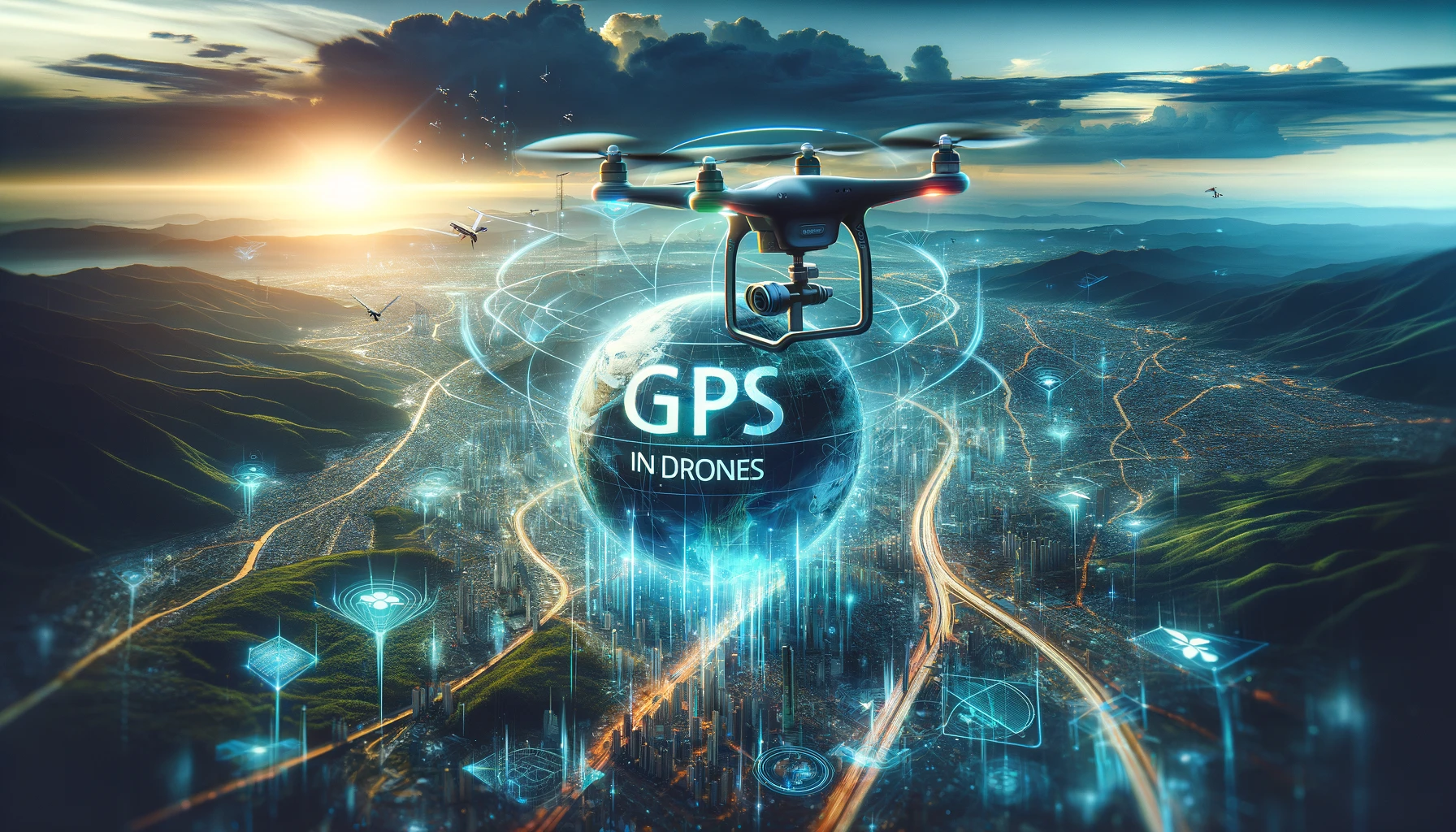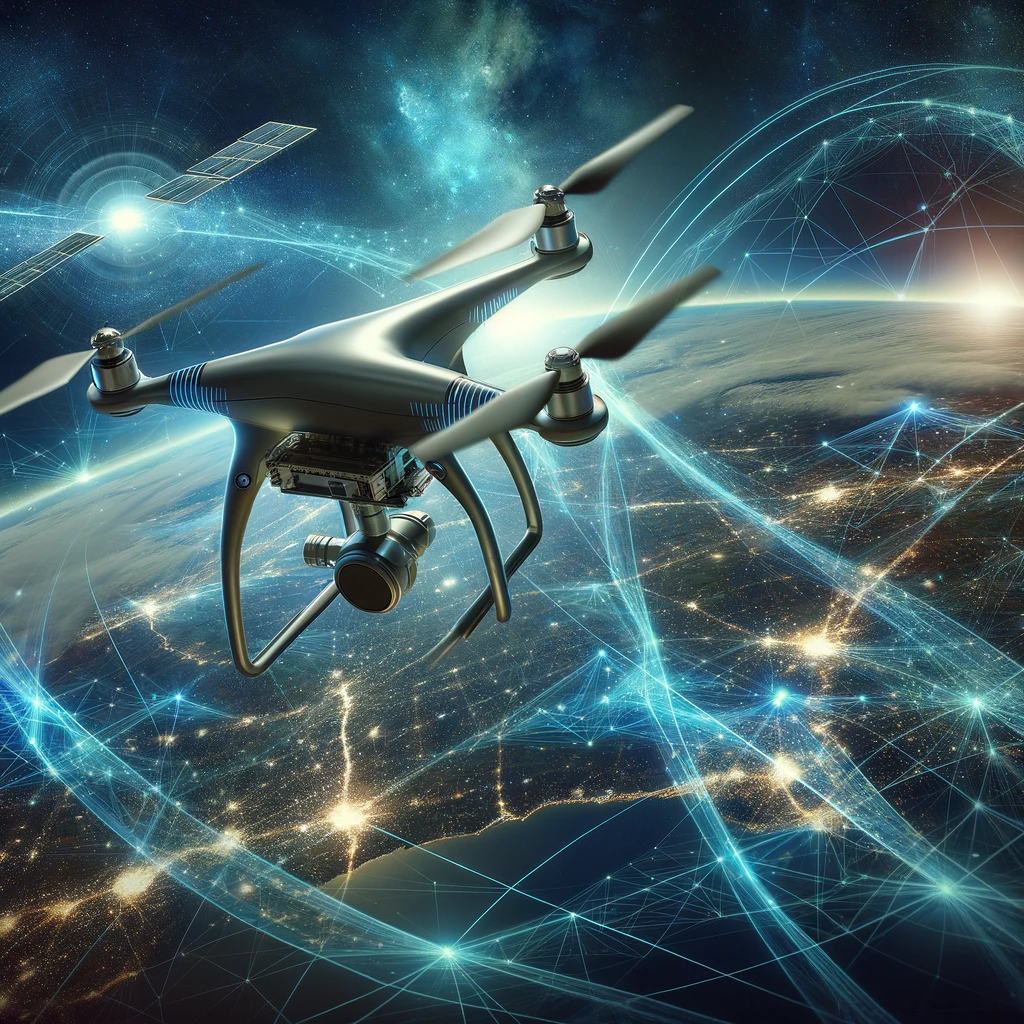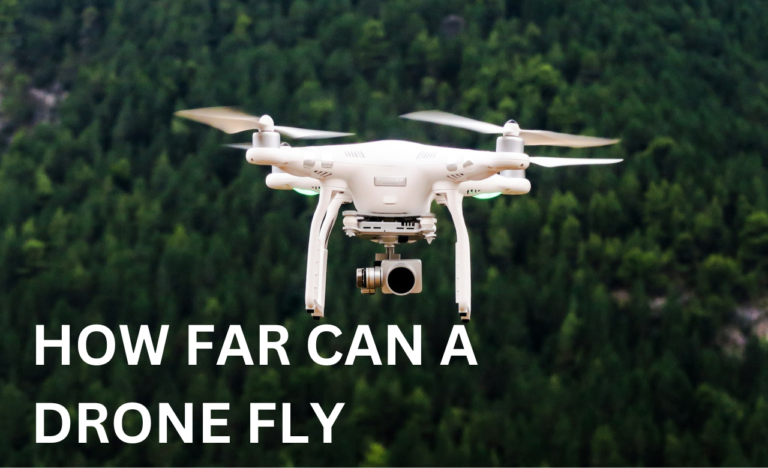Everything You Need to Know About GPS In Drones: Navigating the Skies

GPS In drones and its technology has revolutionized the world of techies, making navigation more precise and reliable. This article delves deep into the integration of GPS systems in drones, explaining why it’s a game-changer for both hobbyists and professionals. If you’ve ever wondered how drones maintain their position in the sky or return to their starting point, this is the read for you.
What is a GPS Drone?
A GPS drone is an uncrewed aircraft equipped with a GPS module, allowing it to receive signals from GPS satellites. This global positioning system (GPS) helps the drone maintain its position, navigate routes, and return to its starting point if necessary. Many consumer drones come with integrated GPS functionality, enhancing their overall performance and safety.
How Do GPS Drones Work?
GPS drones work by receiving signals from the GPS satellites orbiting the Earth. The drone’s GPS receiver processes this data, providing the drone with reference points to determine its location. This allows the drone to navigate, hover in a specific position, and even return to its launch point if it loses its GPS connection.
Why Use GPS in Drones?
GPS in drones offers numerous advantages:
- Safety: GPS drones create a flight log, allowing drone pilots to track their flight path and determine the last known GPS position in case of a mishap.
- Precision: GPS allows drones to hover in a specific location, making tasks like photography and surveying more accurate.
- Automation: Advanced GPS features enable drones to automatically follow pre-set routes, making operations more efficient.
Accuracy of GPS in Drones: How Reliable Is It?

The accuracy of GPS in drones largely depends on the quality of the GPS module and the number of satellites the drone can connect to. If you’re more curious then you can check how far can a drone fly, Most modern drones can achieve an accuracy of a few meters, which is sufficient for most applications. However, in certain situations where GPS signals might be weak or obstructed, the accuracy can decrease.
Challenges Faced While Using GPS in Drones
While GPS technology has revolutionized drone navigation, it’s not without challenges:
- Signal Interference: Buildings, trees, and other obstacles can interfere with the GPS signal.
- Battery Life: Constantly using the GPS can drain the drone’s battery faster.
- Dependence: Over-reliance on GPS can make drone pilots less skilled in manual flying.
Can Drones Fly Without GPS?
Yes, many drones can fly without GPS. However, flying without the help of GPS can be challenging, especially for beginners. Without GPS, drones rely on manual controls, which require more skill and attention from the pilot.
Benefits of Using GPS Drones
GPS drones offer enhanced safety, efficiency, and automation. They can:
- Automatically Return Home: If the drone loses its GPS connection, it can use its last known GPS position to return safely.
- Follow Pre-set Routes: This is especially useful for tasks like surveying or agricultural monitoring.
- Hover Precisely: This is crucial for tasks like aerial photography, where stability is critical.
GPS Drones vs. Non-GPS Drones
While GPS drones offer many advantages, non-GPS drones, often referred to as toy drones, are usually cheaper and can be a good starting point for beginners. However, they lack the advanced features and safety mechanisms that GPS drones provide.
Advanced GPS Features in Modern Drones
The integration of GPS and autonomous flight modes has opened up new possibilities for drones. Advanced features like waypoint navigation and auto-follow allow drones to fly complex missions with minimal input from the pilot.
Waypoint Navigation
Waypoint navigation enables pilots to pre-program a flight path into the drone using GPS coordinates. The drone will then automatically fly to each waypoint on the route and perform programmed actions like taking photos or video.
Commercial survey and inspection companies are using this feature to automate mapping and 3D modelling flights. Waypoint navigation reduces pilot workload and ensures precise coverage of the target area.
Auto-Follow Modes
Auto-follow modes allow a drone to autonomously track and follow a subject using its mobile GPS signal or a tracking device.
The “Follow Me” mode available in consumer drones like the DJI Mavic can be used to film action shots hands-free. For industrial applications, auto-follow enables remote inspection of infrastructure, crops, and more.
Other auto-follow modes like ActiveTrack can even recognize and track specific subjects like people or vehicles. This high degree of automation frees the pilot to focus on mission objectives.
The automation enabled by advanced GPS gives drones unprecedented capabilities. As the technology continues improving, drones will take on increasingly complex autonomous tasks.
The Future of GPS Drone Technology
GPS technology for drones is continuously evolving, opening up exciting new possibilities in navigation, automation, and safety. Here are some innovations we expect to see in the near future:
Augmented GPS
Augmented GPS combines drone onboard sensors like vision systems with GPS to provide more accurate and reliable positioning. This will help drones navigate in areas like urban canyons where satellite signals can be obscured.
Want to update with the latest bitcoin technology? Bitcoin mining software can explain a lot about how the mining works in reality.
Integrated Navigation Systems
Drone navigation will evolve to integrate GPS with other technologies like lidar, ultrasonic sensors, and visual-inertial odometry. This sensor fusion will give drones precision positioning and autonomy beyond what GPS alone can provide.
Enhanced Redundancy and Safety
Future drones will have backup GPS modules and navigation sensors to provide redundancy in case of signal loss. Additional safety protocols like parachute recovery systems will further mitigate risks.
Drone-to-Drone Interaction
Groups of drones can augment positioning by sharing GPS data and collaborating during flights. Swarming drones could perform tasks faster and with greater resilience.
Artificial Intelligence
AI is enabling advanced autonomous flight modes and smoother navigation using GPS data. Drones can make real-time decisions to alter planned routes to adapt to changing conditions.
As GPS technology gets smaller and more accessible, we can expect to see it integrated into a broader range of commercial and consumer drones. The future possibilities are tremendously exciting as these innovations make drones more innovative, safer, and more capable.
Key Takeaways:
- GPS drones are uncrewed aircraft equipped with a GPS module for precise navigation.
- They offer enhanced safety, efficiency, and automation compared to non-GPS drones.
- Modern drones come with advanced GPS features like geo-fencing and waypoint navigation.
- The future of GPS drone technology promises even more advancements and innovations.
Conclusion
GPS has genuinely transformed the world of drones, providing unparalleled navigation capabilities. Whether you’re a hobbyist capturing breathtaking aerial shots or a professional surveying vast agricultural lands, understanding the role of GPS in drones is crucial.
As technology continues to advance, the sky’s the limit for what drones equipped with GPS can achieve.



